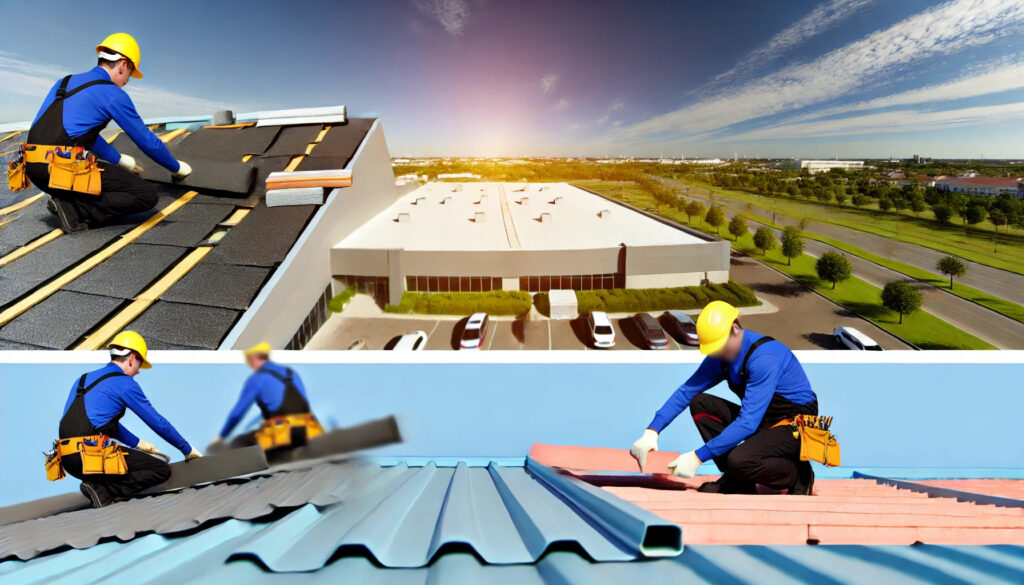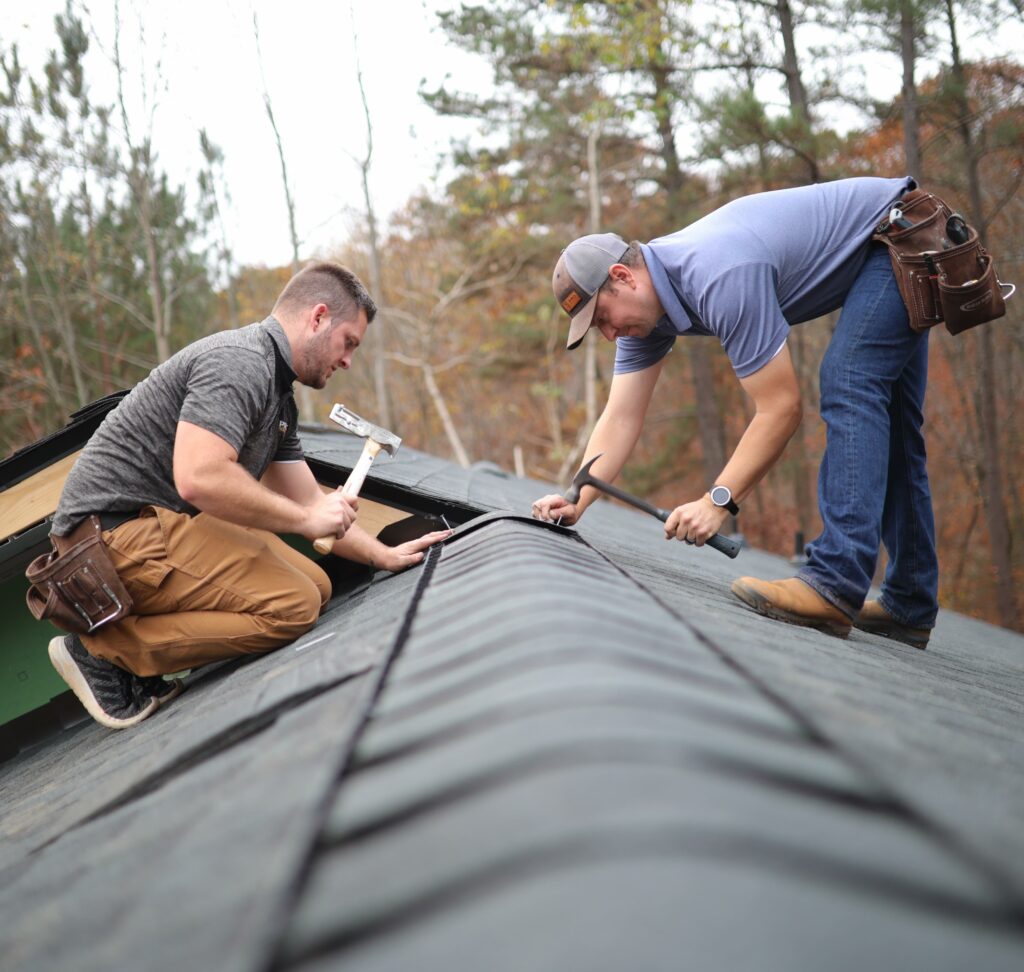A Comprehensive Overview to Effective Roof Flat Roofing System Setup
The complexities of flat roof covering setup demand a meticulous strategy, beginning with a thorough understanding of various flat roofing types and the essential products needed for optimum performance. An effective setup hinges not just on the option of products but additionally on the preparation and implementation of each step entailed in the process.
Comprehending Flat Roof Covering Types
When taking into consideration flat roofings, it is essential to comprehend the numerous types available, as each offers unique benefits and disadvantages tailored to particular requirements. One of the most typical sorts of flat roofing systems include Built-Up Roof (BUR), Modified Bitumen, and Single-Ply membrane layers.
Built-Up Roof covering contains several layers of asphalt and crushed rock, providing exceptional durability and weather resistance. It is especially valuable in locations vulnerable to extreme climate condition however may need even more upkeep as a result of its intricate building and construction.
Customized Asphalt is a prominent option for its simplicity of setup and versatility. It commonly utilizes a torch-applied or self-adhesive approach, which can be helpful for fast repair services and long-lasting performance. However, its lifespan can be shorter contrasted to BUR.
Single-Ply membrane layers, consisting of Thermoplastic Olefin (TPO) and Ethylene Propylene Diene Monomer (EPDM), are recognized for their light-weight nature and power effectiveness. These materials are typically chosen for commercial structures because of their cost-effectiveness and convenience of setup (Cleveland Roofing Specialists). They might not supply the same degree of insulation as various other choices.
Each roofing kind requires mindful factor to consider based on environment, budget plan, and specific task demands.
Vital Materials for Apartment Roofing
A selection of necessary materials are critical for the successful installment of level roof. The selection of materials straight effects longevity, performance, and general effectiveness.
One of the primary materials is the roof covering membrane, which can be built from various materials such as thermoplastic polyolefin (TPO), ethylene propylene diene monomer (EPDM), or PVC. Each kind offers special advantages, consisting of UV resistance and adaptability, which are important for long term efficiency.
Along with the membrane, insulation products play a considerable role in energy performance. Inflexible foam boards or polyisocyanurate insulation are popular choices, as they provide exceptional thermal resistance and dampness management.
In addition, roof covering adhesives and sealants are vital for making certain a watertight setup. These items must work with the selected membrane layer to avoid degeneration with time.
Preparing for Installation
Appropriate prep work is crucial for a successful flat roofing system installment, as it prepares for a reliable and durable roofing system. Begin by conducting an extensive evaluation of the existing roof framework. Look for signs of damage, consisting of leaks, rot, or insufficient drain, which could compromise the new roofing system. Make certain that the hidden materials are audio and can support the weight of the new roof covering components.
Next, collect all necessary devices and materials, guaranteeing that they meet sector requirements. This includes water-proof membranes, insulation, blinking, and bolts. Familiarize on your own with the producer's requirements, as adherence to these standards is crucial for service warranty objectives.
Furthermore, ensure that the job area is clear of Going Here debris and blockages to facilitate risk-free and effective installation. Take into consideration climate condition; stay clear of setup throughout heavy rainfall or severe temperatures, which can influence material performance. Last but not least, notify any residents of the structure about the future work to make sure safety and decrease interruptions. By taking these primary steps, you can improve the chance of an effective flat roofing installment that meets both visual and architectural demands.
Step-by-Step Installation Process
With the groundwork developed via comprehensive preparation, the next stage includes carrying out the level roofing setup systematically. This action is critical for keeping the roof covering's stability over time.
Adhering to the vapor barrier installation, lay down insulation boards, ensuring they fit tightly together to minimize thermal connecting. Secure the insulation with ideal fasteners based on the roofing kind and regional building codes - Cleveland Roofing Specialists.
Make sure proper overlap at seams and sides to create a watertight seal. Utilize adhesives, mechanical bolts, or heat welding as called for. Mount flashing around boundaries, vents, and any kind of roof infiltrations to enhance waterproofing. After installment, conduct a complete inspection to recognize any possible problems prior to concluding the task, ensuring a robust and trustworthy flat roof system.
Upkeep Tips for Long Life
Normal browse this site upkeep is necessary to make sure the longevity and performance of a level roof. Among the key jobs is to perform regular assessments at the very least two times a year, ideally in spring and fall. During these evaluations, search for indicators of wear, such as sores, cracks, or pooling water, which can indicate underlying issues.

Making certain proper water drainage is important to avoid water accumulation. Inspect and clear rain gutters, downspouts, and scuppers to ensure unhampered water flow. Additionally, check seals around vents, skylights, and various other penetrations for any kind of indicators of wear and tear, applying caulk or sealant as required to preserve a leak-proof barrier.
Finally, take into consideration specialist maintenance services every few years for extensive maintenances. By sticking to these upkeep pointers, you can significantly extend the life of your flat roof covering, guaranteeing it continues to be a dependable shield against the elements.
Final Thought
Reliable level roofing installment requires an organized method including comprehensive evaluations, material option, and precise prep work. Adhering to the detailed steps during the installation procedure ensures the correct application of roof covering membrane layers and insulation while improving waterproofing via effective flashing installment.
The ins and outs of flat roofing installment demand a precise strategy, starting with a comprehensive understanding of different level roof types and the crucial materials required for optimum efficiency.Appropriate prep work is important for a successful level roofing setup, as it lays the foundation for a efficient and long lasting web link roofing system. After installation, carry out a detailed inspection to determine any prospective problems before wrapping up the task, making sure a durable and trusted flat roofing system.
